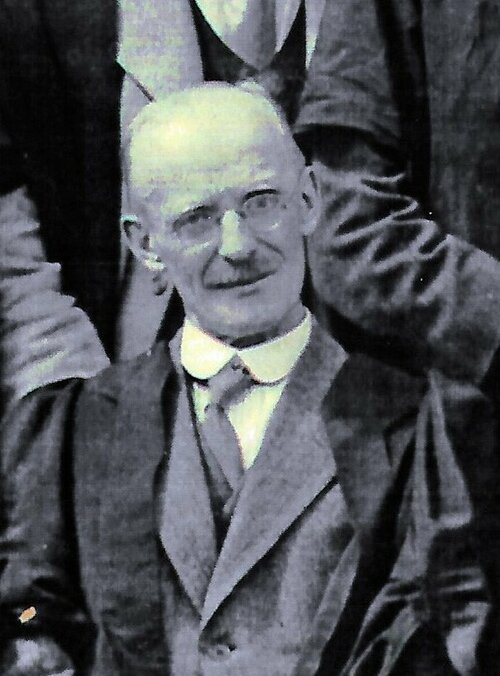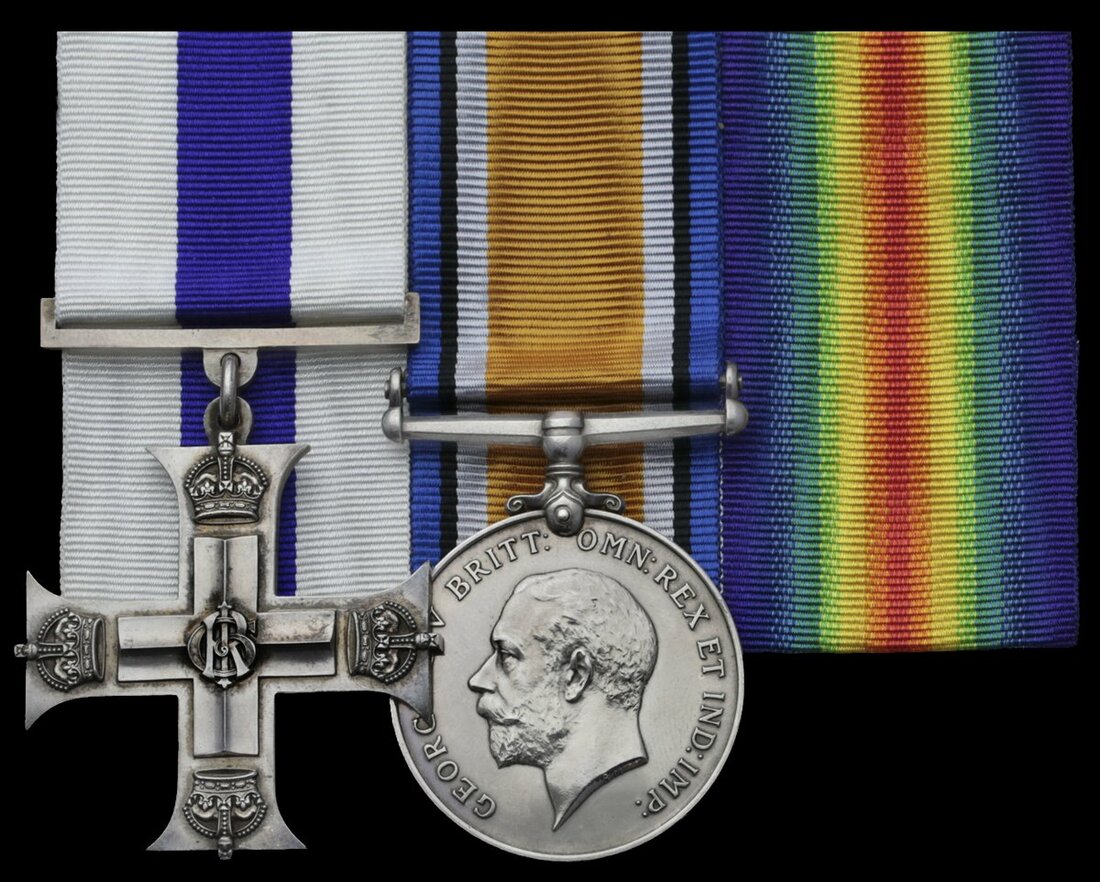Auction: 22001 - Orders, Decorations and Medals
Lot: 544
A 1917 M.C. pair awarded to Captain A. W. Anscombe, Royal Welsh Fusiliers, who shared lodgings with Siegfried Sassoon on the Western Front and gained numerous mentions in his Diaries 1915-18
Military Cross, G.V.R., unnamed as issued, with its case of issue; British War Medal 1914-20 (Capt. A. W. Anscombe.), good very fine (2)
M.C. London Gazette 3 March 1917:
'For Conspicuous Gallantry in action. He assisted to rescue several wounded men under very heavy fire. Later, he took charge of a patrol and established communication under most trying conditions. He has at all times set a fine example of courage and determination.'
Allen Wells Anscombe was born on 11 February 1885 and was educated at Owens School and the University of London, where he gained his BSc in Physics in 1911. Whilst at University he served in the ranks of the O.T.C., 1909-11 and was commissioned in 1912.
Joining the Royal Welsh Fusiliers in January 1915, served in France with the 1st Battalion from 27 March 1916 and was soon rubbing shoulders - and such else - with some of the finest poets produced by the Great War. Anscombe would surely have crossed paths with Robert Graves, who was severely wounded on the Somme but he certainly forged a friendship with Sassoon, for his name appears in print on numerous occasions:
'8th June 1916: Forward Liaison Officer came in (dug out) to gossip with Anscombe.
26th June 1916: Back in old billets self and Anscombe back in the room with Eiffel Tower picture.
3rd July 1916: Anscombe (Lewis guns).
3rd April 1917: The first without Cotterill, Hawes, Adams and Anscombe would be rather empty.'
That last reference is due to the fact Anscombe was wounded on 26 February 1917 around Puisieux, suffering a gun shot wound to the neck. It was a Medical Board in April 1918 found him fit for duty once again but a report of 30 July 1917 shows the wounds were most extensive:
'1) Neck. Left side in front of carotid sheath. The oesophagus was perforated and a fistula formed. Fluid and food escaping for 2 weeks. X-ray shows fragments of metal interspersed among the bodies of the atlas and axis and 3 clavicle (cervical) vertebrae suppuration and some necrosis occurred and 2 fragments were coughed up. Consequently he had bronchopneumonia.
2) Inner end of right clavicle. X-ray shows 2 fragments lodged; exact localisation uncertain.
3) Left thigh. Fistula healed, wounds also.
He is wearing a collar to support his head. Is getting about a bit and making progress.'
Anscombe thence served in Ireland from July 1918-May 1919, when he joined the Army of the Rhine. He was discharged on 7 January 1921 as Temporary Major.
Anscombe then went on to work at Dulwich College from January 1921, with his two sons also being educated at the College. He died on 25 August 1939.
Of his children, John Allen was killed in action in Burma in April 1944, whilst Thomas went up to Cambridge and was later ordained. His daughter, Gertrude Elizabeth Margaret, was a British analytic philosopher. She wrote on the philosophy of mind, philosophy of action, philosophical logic, philosophy of language, and ethics. She was a prominent figure of analytical Thomism. She was a student of Ludwig Wittgenstein and became an authority on his work and edited and translated many books drawn from his writings, above all his Philosophical Investigations.
Subject to 20% VAT on Buyer’s Premium. For more information please view Terms and Conditions for Buyers.
Sold for
£1,200
Starting price
£700







